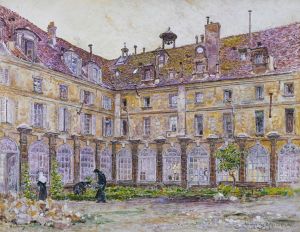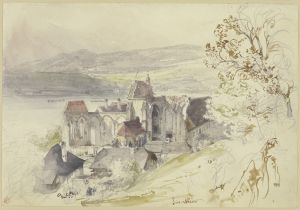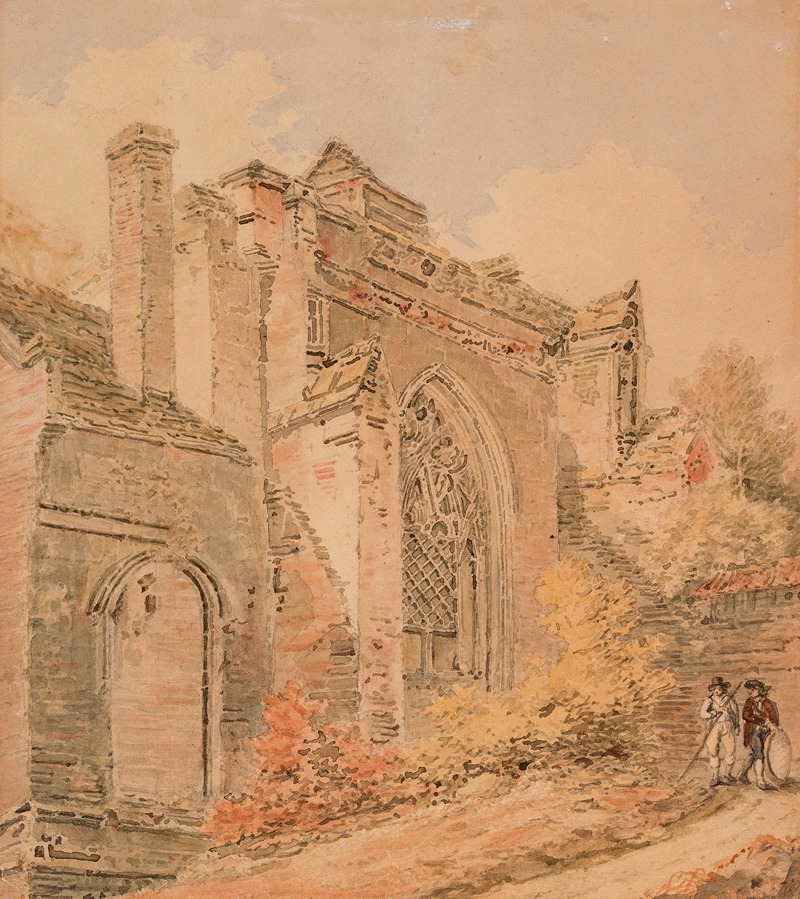
Saint Albans Abbey, Hertfordshire
A hand-painted replica of Joseph Mallord William Turner’s masterpiece Saint Albans Abbey, Hertfordshire, meticulously crafted by professional artists to capture the true essence of the original. Each piece is created with museum-quality canvas and rare mineral pigments, carefully painted by experienced artists with delicate brushstrokes and rich, layered colors to perfectly recreate the texture of the original artwork. Unlike machine-printed reproductions, this hand-painted version brings the painting to life, infused with the artist’s emotions and skill in every stroke. Whether for personal collection or home decoration, it instantly elevates the artistic atmosphere of any space.
Joseph Mallord William Turner, one of the most renowned British landscape painters, created a watercolor painting titled "Saint Albans Abbey, Hertfordshire." This work is part of Turner's extensive exploration of British landscapes and architectural subjects, which he often depicted with a focus on atmospheric effects and light.
Turner was born in 1775 and became a prominent figure in the Romantic movement. His works are celebrated for their innovative use of color, light, and atmospheric effects. Turner had a particular interest in capturing the essence of a place, often infusing his landscapes with a sense of drama and emotion.
Saint Albans Abbey, located in Hertfordshire, England, is a historic site with origins dating back to the 8th century. It is one of the oldest sites of continuous Christian worship in Britain and has a rich history that includes its role as a pilgrimage site. The abbey is named after Saint Alban, the first British Christian martyr, and has been a focal point of religious and cultural significance throughout the centuries.
Turner's depiction of Saint Albans Abbey is a testament to his ability to blend architectural precision with atmospheric mood. In this watercolor, Turner captures the abbey's imposing structure amidst a serene landscape, highlighting the interplay between the man-made and the natural. His use of light and shadow creates a dynamic composition that draws the viewer's eye across the scene, emphasizing the abbey's grandeur and its harmonious integration into the surrounding environment.
The painting is characterized by Turner's signature style, which often includes a delicate balance of detail and abstraction. In "Saint Albans Abbey, Hertfordshire," Turner employs a subtle palette, using washes of color to suggest the time of day and weather conditions. This technique allows him to convey the transient effects of light and atmosphere, a hallmark of his work.
Turner's interest in architecture and landscapes was not merely aesthetic; it was also informed by his understanding of history and the cultural significance of the sites he depicted. By choosing to paint Saint Albans Abbey, Turner not only showcased his technical skill but also contributed to the broader appreciation of Britain's historical and architectural heritage.
The painting of Saint Albans Abbey is part of Turner's broader body of work that includes numerous studies and finished pieces of British landmarks. His works have been influential in shaping the perception of the British landscape and continue to be celebrated for their artistic and historical value.
Today, Turner's paintings, including "Saint Albans Abbey, Hertfordshire," are held in high regard and can be found in major art collections and museums around the world. They serve as a testament to his enduring legacy as a master of landscape painting and his ability to capture the spirit of a place through his unique artistic vision.













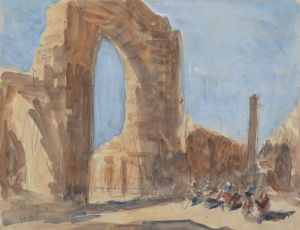
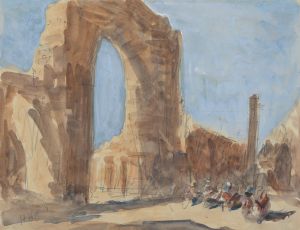
![Designs for the Puck Theater , New York, NY.] [Exterior perspective study..](/imgs/249325/s/winold-reiss-designs-for-the-puck-theater-new-york-ny-exterior-perspective-study-aba2fbab.jpg)
